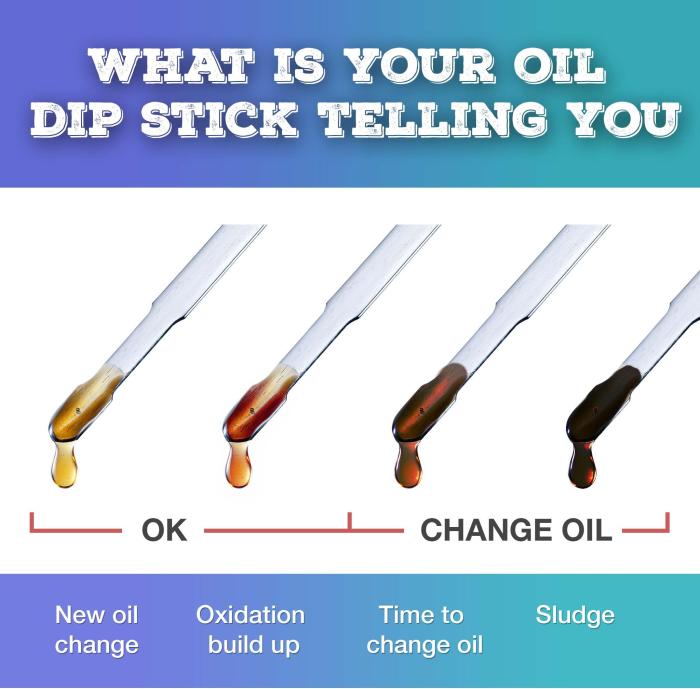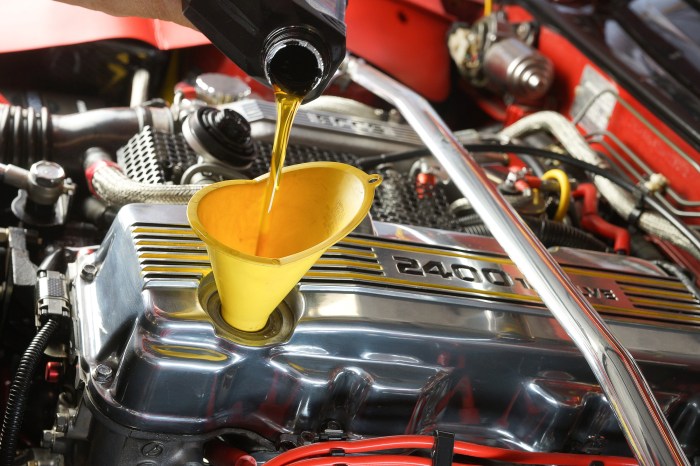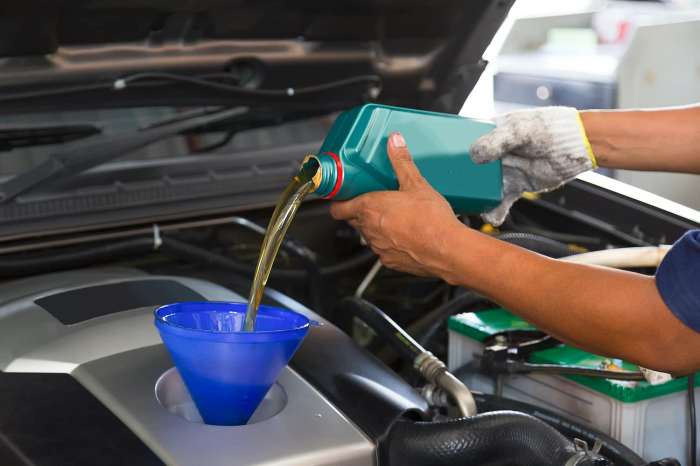Guide to changing your car’s oil: A task that every car owner should master to ensure optimal performance and longevity of their vehicle. From selecting the right oil to proper disposal, this guide covers it all, making the process easy and cost-effective.
Introduction to Changing Your Car’s Oil: Guide To Changing Your Car’s Oil

Regular oil changes are crucial for maintaining the health and longevity of your car’s engine. Fresh oil helps lubricate the engine components, reduce friction, and prevent overheating, ensuring optimal performance.
Benefits of Changing Oil Yourself vs. Going to a Mechanic
Performing your own oil changes can save you time and money in the long run. You have control over the quality of oil and filters used, and you can tailor the process to your car’s specific needs. Additionally, it can be a satisfying DIY project for car enthusiasts.
- Cost-effective option
- Customize oil and filter selection
- Hands-on experience with your car
Basic Tools and Materials Needed for an Oil Change
Before starting the oil change process, make sure you have the following tools and materials on hand:
- Oil filter wrench
- Socket wrench set
- Oil drain pan
- Funnel
- New oil filter
- Engine oil
- Rags or paper towels
Determining the Right Oil and Filter
When it comes to changing your car’s oil, selecting the correct type of oil and filter is crucial for the optimal performance and longevity of your vehicle.
Choosing the right oil for your car involves considering factors such as viscosity, additives, and manufacturer recommendations. You can typically find the recommended oil type and viscosity in your car’s owner’s manual. It is important to follow these guidelines to ensure that your engine is properly lubricated and protected.
Selecting the Right Oil
- Check your owner’s manual for the recommended oil type and viscosity.
- Consider the climate you are driving in and choose the appropriate viscosity for your engine.
- Look for reputable oil brands that meet industry standards and certifications, such as API (American Petroleum Institute) or ILSAC (International Lubricant Standardization and Approval Committee).
- Choose synthetic oil for better performance and protection, especially in extreme driving conditions.
Importance of Choosing the Right Oil Filter
- An oil filter is essential for trapping contaminants and impurities that can damage your engine.
- Ensure that the oil filter is compatible with your car’s make and model to guarantee proper fit and function.
- Opt for high-quality oil filters that offer superior filtration and durability to keep your engine clean and running smoothly.
- Regularly replacing the oil filter during oil changes is crucial for maintaining engine health and performance.
Comparing Oil Brands and Types
- Consider factors like price, quality, and performance when comparing different oil brands.
- Some popular oil brands include Mobil 1, Pennzoil, Castrol, and Valvoline, each offering a range of oil types to suit different vehicles and driving conditions.
- Consult with a trusted mechanic or refer to online reviews to determine the best oil brand and type for your specific car model.
- Experimenting with different oil brands and types can help you find the optimal choice for your vehicle’s performance and longevity.
Preparing for the Oil Change

Before starting the oil change process, it is crucial to prepare your car properly to ensure a smooth and safe operation.
Steps to Prepare Your Car for an Oil Change
- Make sure your car is parked on a level surface to prevent any accidents or oil spillage.
- Allow the engine to cool down before starting the oil change process to avoid burns or injuries.
- Gather all the necessary tools and materials, including a wrench, oil pan, funnel, new oil filter, and the appropriate amount of motor oil.
- Locate the oil drain plug and oil filter under your car to ensure easy access during the oil change.
Safety Tips for Working Under the Car
- Always wear protective gear such as gloves and safety goggles to prevent any injuries from sharp edges or hot oil.
- Use jack stands to lift and secure the car instead of relying solely on the jack to prevent accidents or the car from falling.
- Never work under a car supported only by a jack. Always use jack stands for additional safety and stability.
- Keep a fire extinguisher nearby in case of any accidental oil spillage or fire hazards.
Properly Lifting and Securing the Vehicle
- Place wheel chocks behind the rear tires to prevent the car from rolling while you lift it.
- Use a hydraulic jack to lift the car securely at the designated lift points recommended in the owner’s manual.
- Once the car is lifted, carefully place jack stands under the frame or designated lift points to support the weight of the vehicle.
- Gently shake the car to ensure it is stable and secure on the jack stands before crawling underneath to perform the oil change.
Draining the Old Oil
When it comes to changing your car’s oil, draining the old oil is a crucial step in the process. Properly removing the old oil ensures that your engine stays healthy and functions efficiently.
Locating the Oil Drain Plug
To begin draining the old oil, you will first need to locate the oil drain plug underneath your vehicle. The oil drain plug is typically located on the bottom of the oil pan, which is situated near the engine. Refer to your car’s manual if you are unsure about the exact location.
- Make sure the engine is not hot to prevent burns.
- Have a drain pan ready to catch the old oil.
Draining the Old Oil Safely
Once you have located the oil drain plug, place the drain pan underneath it to catch the old oil. Use a wrench to carefully loosen the plug in a counterclockwise direction. Be prepared for the oil to flow out once the plug is removed.
Be cautious as the oil may be hot and could cause burns.
- Allow the old oil to completely drain out into the pan.
- Check the condition of the oil as it drains to ensure there are no metal shavings or other contaminants.
Tips for Minimizing Spills and Environmental Impact
To minimize spills, try to position the drain pan directly below the oil drain plug and anticipate the flow of oil. Additionally, consider using a funnel to guide the oil into the pan more accurately.
- Once the oil has drained completely, securely tighten the oil drain plug back into place.
- Dispose of the old oil properly by taking it to a recycling center or an auto parts store that accepts used oil.
Changing the Oil Filter
When changing your car’s oil, it is crucial to also replace the oil filter to ensure optimal engine performance and longevity.
Removing and Replacing the Oil Filter, Guide to changing your car’s oil
- Locate the oil filter, which is typically found near the oil pan or engine block.
- Use an oil filter wrench to loosen the old filter in a counterclockwise direction until it can be removed by hand.
- Dispose of the old filter properly and clean the filter housing before installing the new one.
- Before installing the new filter, lubricate the rubber gasket with fresh oil to create a proper seal.
- Hand-tighten the new oil filter in a clockwise direction until snug, then give it an additional quarter turn to ensure it is secure.
Importance of Lubricating the New Filter
Lubricating the rubber gasket of the new oil filter is essential to prevent leaks and ensure a proper seal. This step helps maintain oil pressure and keeps contaminants out of the engine.
Common Mistakes to Avoid
- Avoid over-tightening the oil filter, as this can damage the gasket and cause leaks.
- Make sure to properly dispose of the old filter and recycle it according to local regulations.
- Double-check that the new filter is the correct size and type for your vehicle to prevent compatibility issues.
Refilling with Fresh Oil
When it comes to refilling your engine with fresh oil after draining the old one, it’s important to do it correctly to ensure the optimal performance of your vehicle. Here, we will discuss how to refill the engine, check the appropriate oil level, and choose the right oil viscosity for your car.
Refilling the Engine
To refill the engine with fresh oil, locate the oil filler cap under the hood of your car. Remove the cap and carefully pour the recommended amount of oil into the engine using a funnel to avoid spills. Make sure to use the type of oil specified in your vehicle’s manual for the best results.
Checking the Oil Level
After refilling the engine with oil, it’s crucial to check the oil level to ensure it’s within the recommended range. Use the dipstick provided in your car’s engine, insert it into the oil reservoir, and pull it out to see the oil level. Add more oil if needed but be careful not to overfill.
Choosing the Right Oil Viscosity
When selecting the right oil viscosity for your vehicle, consider factors such as the climate you live in, the age of your car, and the manufacturer’s recommendations. Consult your owner’s manual to determine the correct viscosity grade to maintain the engine’s performance and longevity.
Post-Change Inspection and Cleanup
After completing the oil change process, it is essential to perform a thorough inspection to ensure everything is in order. Additionally, proper cleanup and disposal of old oil and filters are crucial for environmental safety.
Inspecting for Leaks
- Start the engine and let it run for a few minutes to circulate the new oil.
- Check underneath the car for any signs of leaking oil.
- Look at the oil drain plug and oil filter for leaks.
- If you notice any leaks, immediately turn off the engine and address the issue before driving the car.
Proper Disposal of Old Oil and Filters
- Collect the old oil in a suitable container and seal it properly.
- Take the container to a local recycling center or an auto parts store that accepts use oil for recycling.
- Do not dispose of old oil in the trash, down the drain, or on the ground.
- Place the old oil filter in a plastic bag to prevent leaks and take it to the same recycling center for proper disposal.
Cleaning Up Spills or Mess
- Use a rag or absorbent material to clean up any oil spills on the ground or the car’s surface.
- Avoid washing oil down the drain as it can harm the environment.
- If any oil has splashed on engine components, wipe them clean with a rag.
- Dispose of the used rags or absorbent materials properly, following local regulations.
Wrap-Up

In conclusion, changing your car’s oil is a fundamental maintenance task that can save you time and money in the long run. By following the steps Artikeld in this guide, you can keep your car running smoothly for years to come.
When it comes to safety on the road, it’s important to choose a vehicle that prioritizes your well-being. You can check out the list of top rated vehicles for safety to ensure you’re driving a reliable and secure car.
Looking for a car that you can depend on? Explore the market for the most reliable cars on the market that offer both performance and peace of mind.